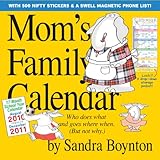I liked the insights regarding home schooling which I found at homeschooling.about.com .
 It will provide you with a few suggestions before you embark upon your Home schooling journey. Here goes:
It will provide you with a few suggestions before you embark upon your Home schooling journey. Here goes:
1. Setting the Bar Too Low
Research has shown that one of the greatest determining factors in a student’s performance is teacher expectation. Teacher expectation has proven to be a big determining factor, when it comes to how a student performs in class. This is no different for your homeschool student. And certainly, it is no different when you are homeschooling your children.
You should be careful – don’t be too lenient with your kids, when it comes to being their teacher. Just as you should show love and respect to each of your children, when you are in the classroom you need to be professional, and have high expectations of them. After all, you don’t want your students to goof off, or not try as hard as they can simply because they are related to the teacher.
When You Expect the Best, Your Students meet the Bar
You may have taken note that Johnny is really good at math, however he finds Reading to be a challenge. In your effort to help your child, you should set aside any “preconceived perceptions” you might have about your child, and their abilities in certain subjects (or lack thereof). As you explore different programs to help your child, keep very positive thoughts. Just know deep down that your son will succeed – and project this to him. Be professional always – you are his teacher, and you need to be a good leader.
2. Don’t Make the Mistake of Teaching the Way You Enjoyed Learning
Everyone learns differently. Don’t expect that because you learned best when shown pictures, that the same is true for your child. Experiment with different styles of teaching and ask for your child’s input to help you figure out what works best for them. You may find that some teaching methods work better than others, with your kids. And since every student is an individual and learns differently, you will likely have to experiment to find what’s best. Some kids are visual learners; others learn best through reading, while others enjoy listening to a lecture or learn best through a combination of lecture and slideshow.
If you have multiple students, find out the needs of each. Test out different combinations of media and text, to determine this. Be sure and ask for feedback from each child.
3. Classroom Management
Power Teaching Strategies — Classroom Management– Power Teacher Training Coach
How to Use Power Teaching: Whole Brain Strategies & Advanced Methods
Parents Mistakenly Think:
“I want the classroom to be a place where my child can explore and learn freely, I don’t want the rules to prevent them from exploring.”
– “I don’t need to go over the rules! My child is always well behaved.”
Oftentimes, parents assume that since they have established a set of rules (and order) in the home, they do not need to re-establish discipline at the homeschool setting. This is not true. You do need to go over certain rules, and develop a routine specific to your homeschool. Make it clear what is acceptable during homeschool hours. THere needs to be order, and it needs to be CLEAR what can not be tolerated during school hours at home. It is a good idea to put them in writing, and print out a copy for each student. For example, no cell phones should be ringing during School hours. Have a plan, and stick to it.
4. Teaching 1 Thing at a Time
When you plan your schedule for each day, do you schedule it according to subect? History from 8-9, reading from 9-10, english and vocabulary from 10-11, and math from 11-12, and so on.
Important: Your child will be better able to retain all the subjects that you teach if they are interrelated.
If you design units  of study that are inter-related, your students will retain more. This has been shown to be the case. Homeschooling Mothers should try to see the big picture or theme that applies to math, history, english/reading and science. Plan projects of study that go together. For example, you might have your science & history intertwine. You could have Johnny do a science project that is based in the late 1800’s – that is, he could recreate an invention from that time, and so it would be a historic journey (with learning along the way) AND it would be a science project, too.
of study that are inter-related, your students will retain more. This has been shown to be the case. Homeschooling Mothers should try to see the big picture or theme that applies to math, history, english/reading and science. Plan projects of study that go together. For example, you might have your science & history intertwine. You could have Johnny do a science project that is based in the late 1800’s – that is, he could recreate an invention from that time, and so it would be a historic journey (with learning along the way) AND it would be a science project, too.
5. Teaching is Telling 
This is a pretty basic mistake, but one that I frequently hear. Parents explain something new to their student, and don’t understand why it doesn’t “stick“. The straightforward answer is that teaching is not just telling. Listen up – if you want to be a good teacher, then you will simply need to learn a variety of ways to instruct your child.
There is hands-on learning, inquiry learning, visual aids, reciprocal teaching, and technology-based learning. I could go on and on about how you should constantly try to find new ways of instructing that can improve your child’s learning – and how you ought to constantly challenge your kids – both in the academic arena, and also in the social activities area. You don’t want to neglect that part of your child’s learning. Plan regular homeschooling field trips and trips to church, etcetera, so that your kids receive proper socialization.
The main thing to realize is that a big part of teaching is LEARNING.


